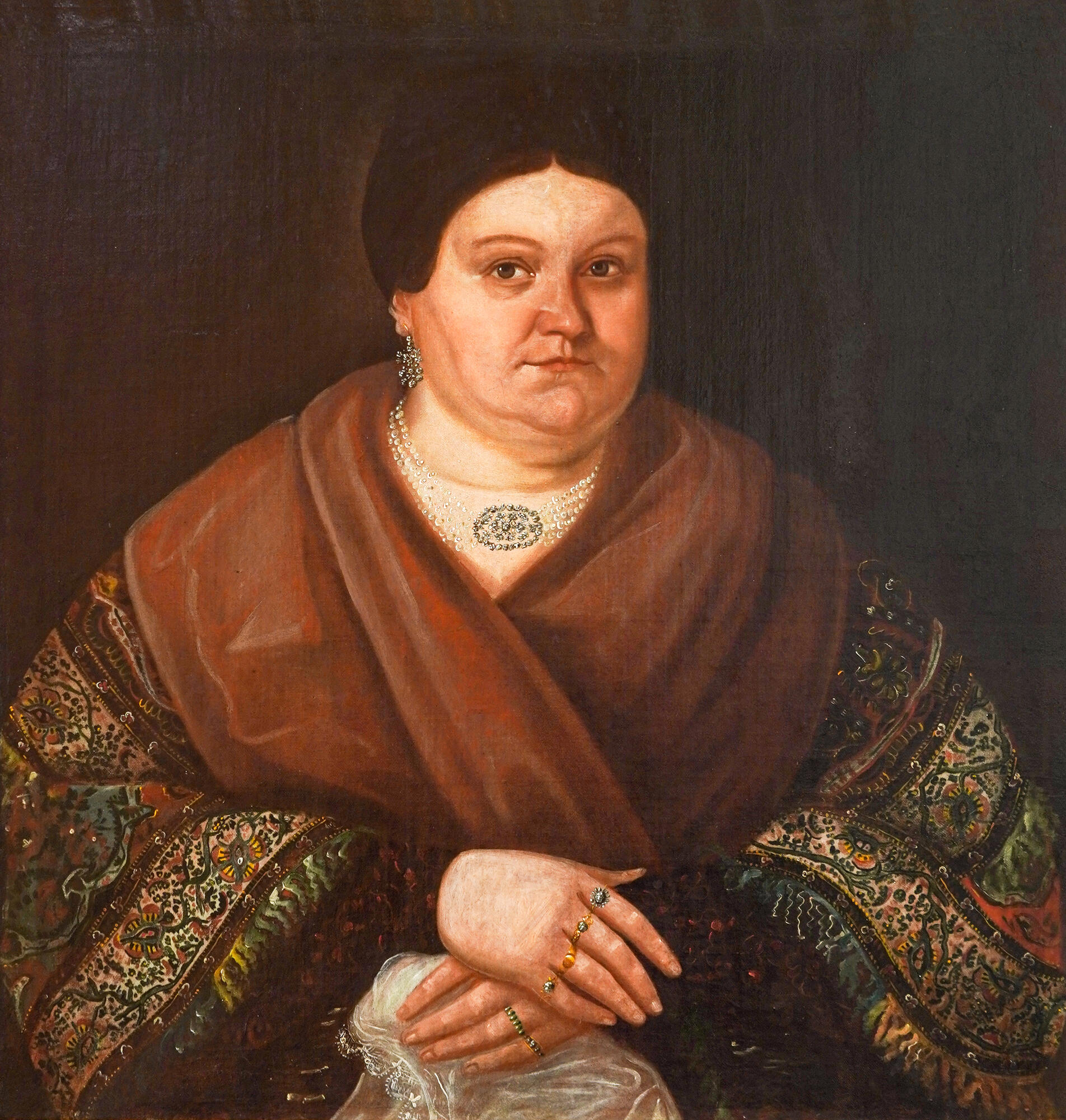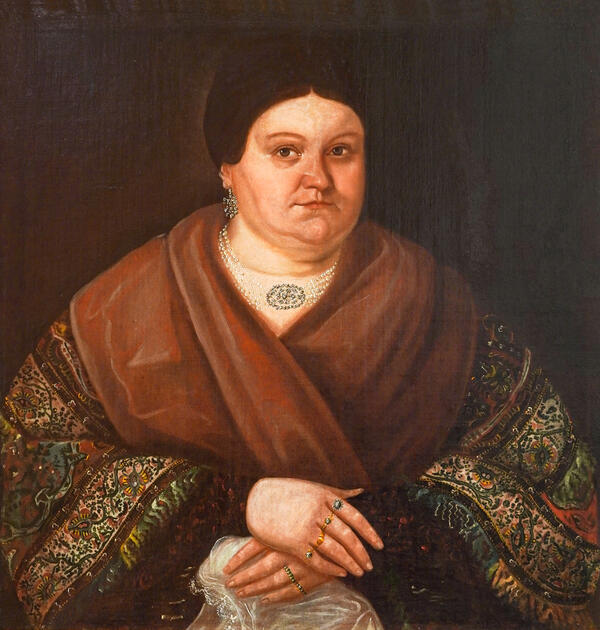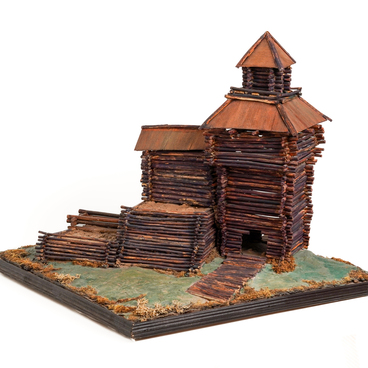Kolomna in the 18th–19th centuries is commonly referred to as a merchant town. It was traversed by many commercial river and land routes. Three rivers converge in Kolomna: the Kolomenka, which gave its name to the city, the Moskva River, and the majestic Oka. Local merchants maintained close ties with merchants from Moscow, Voronezh, St. Petersburg, Ryazan, Taganrog, Astrakhan and other cities. Rich merchants of Kolomna lived mainly in the Kremlin, with shops located in the suburbs. The merchant dynasties of the Meshchaninovs, Tupitsyns, Chuprikovs and Levins are part of Kolomna’s history.
The Kolomna Kremlin Museum presents a portrait of an unknown merchant woman. There is nothing accidental in the composition of the portrait, the image is static and monumental, which emphasizes the dignity and importance of the wealthy woman. Of particular note are typical accessories of the merchant class: the expensive shawl, rings, earrings and necklaces. The representatives of this class were usually painted healthy, strong, beautiful and elegant, wearing costly furs, luxurious shawls, silk dresses and jewels. Artists were attracted by merchants’ tastes, customs and closeness to the folk: many of them had a peasant background.
The canonical style of the primitive portrait combines elements of both medieval archaic and modern painting. The functional significance of the genre is in the presentation of the class ideal and in its edifying and educational effect on members of the class. A merchant portrait is a concept which unites all the images of merchants that exist in art.
The demand for merchant portraiture as a social genre was influenced by the art of Old Believers, especially the Old Believer’s portrait. The merchant portrait appeared and existed on the border of two systems — professional and primitive art. In the system of “scholarly” painting the merchant’s portrait was a marginal genre, in the genre of primitive art it became an essential part of a complete picture of the world, embodying one of the components of the human image.
The Kolomna Kremlin Museum presents a portrait of an unknown merchant woman. There is nothing accidental in the composition of the portrait, the image is static and monumental, which emphasizes the dignity and importance of the wealthy woman. Of particular note are typical accessories of the merchant class: the expensive shawl, rings, earrings and necklaces. The representatives of this class were usually painted healthy, strong, beautiful and elegant, wearing costly furs, luxurious shawls, silk dresses and jewels. Artists were attracted by merchants’ tastes, customs and closeness to the folk: many of them had a peasant background.
The canonical style of the primitive portrait combines elements of both medieval archaic and modern painting. The functional significance of the genre is in the presentation of the class ideal and in its edifying and educational effect on members of the class. A merchant portrait is a concept which unites all the images of merchants that exist in art.
The demand for merchant portraiture as a social genre was influenced by the art of Old Believers, especially the Old Believer’s portrait. The merchant portrait appeared and existed on the border of two systems — professional and primitive art. In the system of “scholarly” painting the merchant’s portrait was a marginal genre, in the genre of primitive art it became an essential part of a complete picture of the world, embodying one of the components of the human image.



